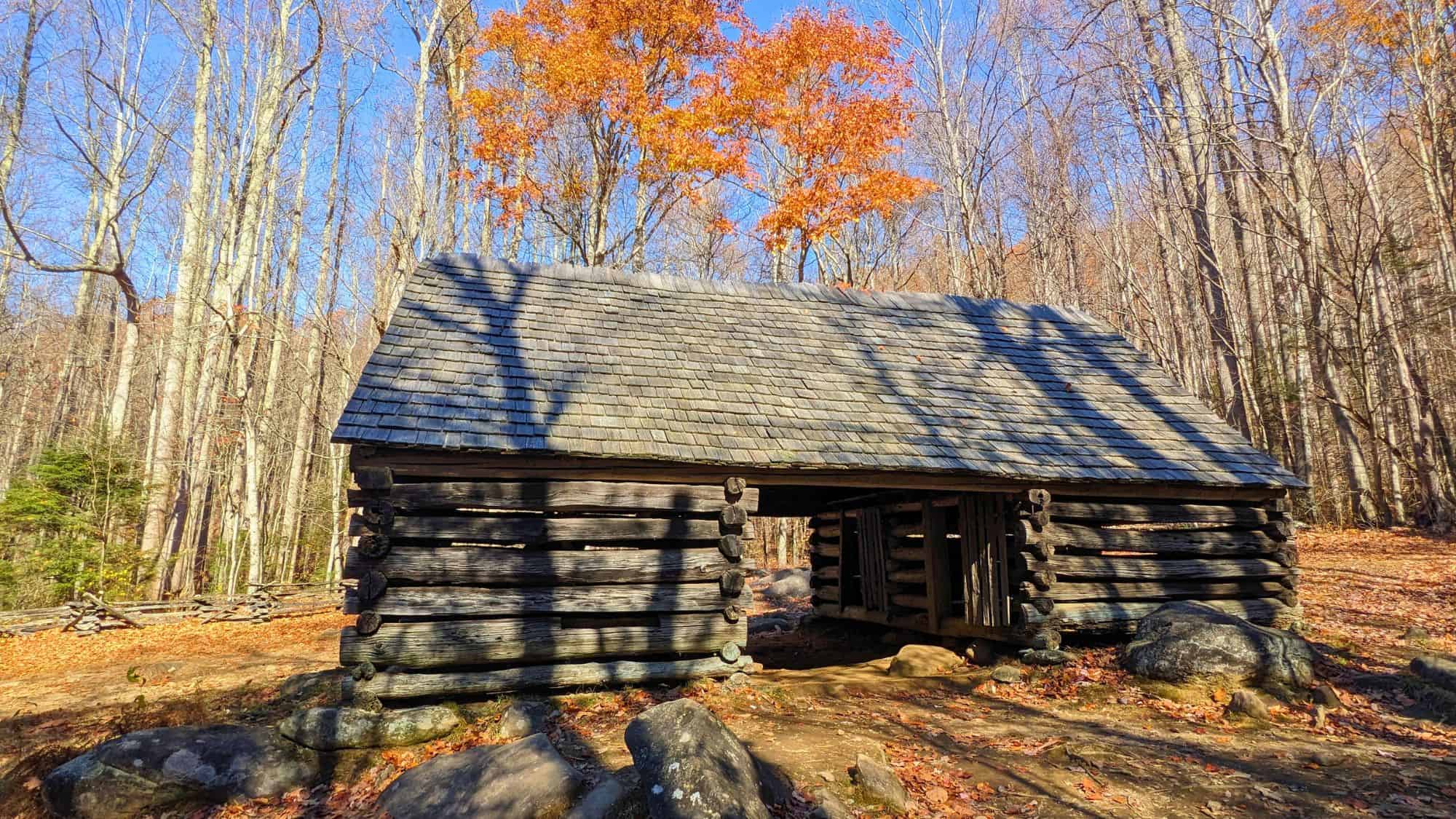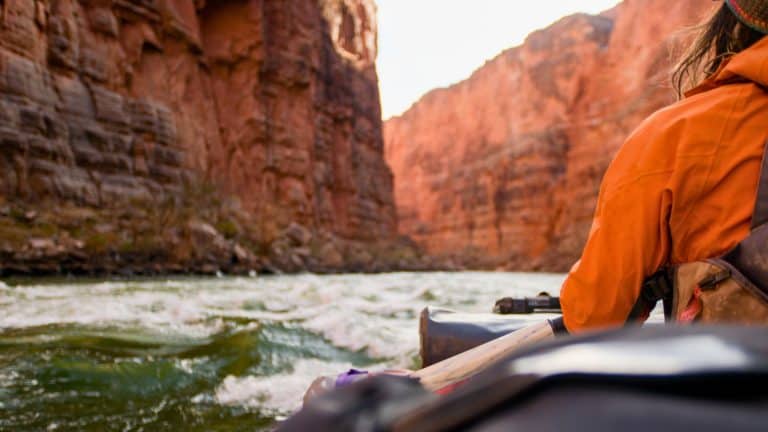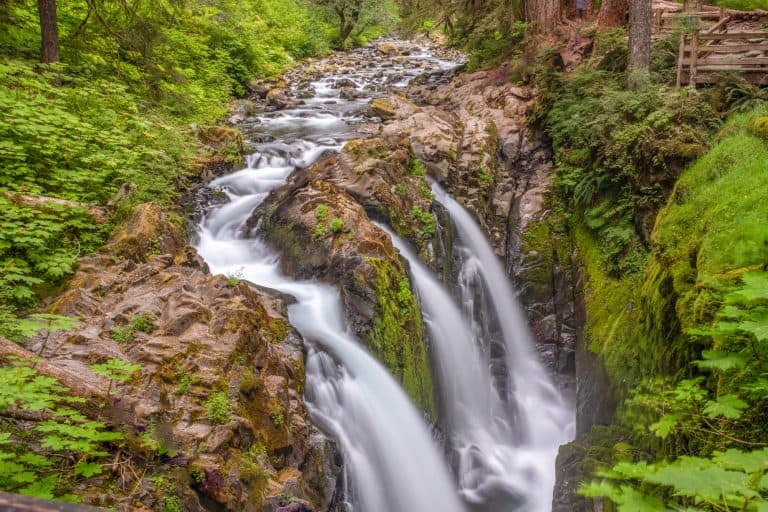Discover Parks & Wildlife contains affiliate links and is a member of the Amazon Services LLC Associates Program. If you make a purchase using one of the Amazon links, we may receive compensation at no extra cost to you. We may also use select AI tools to support our creative process, but all content is reviewed, refined, and finalized by our human team. See our disclosure policy and our AI use policy for more information.
Planning For A Late-Year Road Trip Through Great Smoky Mountains National Park
Crisp air that bites just enough to feel alive, valleys draped in swirling mist that could give a noir film a run for its money, and trails so quiet you’d swear the trees are trying to tell you secrets; this is Great Smoky Mountains National Park in late fall and winter.
Gone are the swarms of selfie-stick-wielding tourists, replaced instead by a serene stillness that feels rare, almost illicit. And the brilliance of lingering fall foliage fades into a striking mosaic of bare branches and snow-sprinkled peaks, reminding you that the Smokies don’t need a warm-weather glow to show off.
For road trippers, this season is the holy grail of exploration: fewer back-ups on the roadways, better parking, and viewpoints so uncluttered they might actually make you believe in miracles. But this isn’t just about pretty landscapes. It’s also not just about pulling over for a quick snapshot to toss into your digital graveyard of photos.
This trip, with its hidden locales and surprises around every bend, deserves more than that. It demands exploration, and maybe even a little curiosity. So let’s take a look.
Road & Travel Prep Before Your Adventures In The Smokies
The Smokies in late fall are a paradox of serenity and chaos; a place where the silence of misty mountain roads can meet the crunch of frosty leaves beneath frantic tires.

Road & Car Prep
First, take this as gospel truth: check the road conditions. Newfound Gap Road might seem inviting in photos, but when the ice moves in on the higher elevations, it turns into a slick, unholy skating rink. And you don’t want to channel your inner figure skater with a two-ton car.
Speaking of your noble steed, take the time to prep it. Antifreeze isn’t optional. Windshield fluid better not freeze mid-spray. And your tire pressure should be Goldilocks-perfect.
Consider tossing in some traction aids or chains, just in case nature decides to audition for its next winter special while you’re there.
Traffic? October leaf-peeping will test your patience, but mid-November flips the script. The road quiets, the crowds vanish, and you’ll feel a rare moment of solitude.
Navigation
Lost signal? That’s not just a horror movie trope here; it’s reality. Cell service ghosts you fast inside the park.
Offline maps will save you from accidentally discovering “roads” better suited for mountain goats. And gas up, too. Stations dwindle as you approach Smoky Mountain isolation. And running out of fuel this time of year isn’t “adventurous.” It’s just stupid.

Timing & Planning Tips
The late autumn light doesn’t just fade; it vanishes with all the subtlety of a disappearing magician.
One moment, the world is bathed in a golden glow, and in the blink of an eye, you’re fumbling for your flashlight while shadows claim the valleys.
Plan For Only Daytime Drives
Those dreamy drives through Smoky Mountain curves? They need to end by late afternoon unless you’re cozy with navigating unlit switchbacks in the dark.
Dawn to dusk is your best friend out here on a road trip this time of year. You really don’t want to get stuck after dark with no help in sight (and black bears roaming the landscape).
Embrace Unpredictable Weather
The weather? It’s moody, unpredictable, and loves a good plot twist.
A morning stroll to Clingmans Dome might offer crisp mountain air and endless views, but by noon, a rogue snow flurry could send you back down the mountain faster than you climbed it.
So keeping your plans loose and your options open isn’t just smart; it’s a survival instinct.
Average Temperatures for the Rest of the Year:

Book Accommodations In Advance
Holiday travelers swarm heating-equipped cabins like bears stockpiling food, so booking accommodations becomes less of a task and more of a competitive sport.
“Rustic charm” is great for postcards, but shivering all night in a heat-deficient cabin is not. So check what’s actually included before you commit to “unique” lodging. Turns out, plaid blankets only do so much against a frostbitten breeze.
Don’t Skip Visitor Centers
Visitor centers are bastions of local expertise. But they may operate on limited schedules this late in the season. So make sure to see when they are open.
They are well worth your time for insider tips, updated trail conditions, and the lowdown on local events.
From holiday markets in Gatlinburg to cultural celebrations in Cherokee, this region bursts with festivities at the end of the year you won’t want to miss. They’ll make your travel tales a little less ordinary.
Watch For Wildlife
Then, there’s the wildlife. Fall means deer and elk are carpe diem’ing their way across roadways as rutting season is underway.
So stay sharp unless you want to explain a hood dent caused by one of nature’s more impulsive residents.
Comfort & Safety On The Road
Comfort and safety are always a huge priority. But with the unpredicatibabel weather, they are even more important this time of year.
Dress In Layers
The frosty breath of dawn creeps through the Smokies like a quiet but unrelenting rival. It chills your hands as you clutch a thermos of steaming coffee, watching the sun smear gold across the valleys. You sit cozy in your coat, hat, and gloves.
By noon, the chill can yield to a surprising touch of warmth that demands you strip off that extra jacket. This is the fickle personality of the Appalachian climate.
If you’re not layered like a champion, you’ll feel like the punchline of some cruel cosmic joke. Versatility in your wardrobe is your secret weapon.

Pack An Emergency Kit
Don’t scoff at stashing an emergency blanket, a first-aid kit, and hand warmers in your car. Their value is usually discovered when stranded at a scenic overlook or waiting out mountain fog that erases entire roads from view.
And a flashlight buried at the bottom of your bag suddenly becomes the most important tool of the trip when night falls earlier than expected.
And don’t forget to use some of those packing emergency skills to add some snacks and water. If you get stranded for any reason, you will be glad for the sustenance.
The Smokies demand respect during this changing season. Preparedness isn’t just practical, it’s the difference between discomfort and magic.
Stay Hydrated And Energized
Hydrate. Yes, even when it’s cold. That reusable bottle you swear you own? Bring it. Between the cooler air and the sheer joy of stopping to stare at every other ridge, you’ll need it.
Add in a thermal bottle of hot cocoa while parked at an overlook, and you’ve got an indulgence so satisfying it feels illegal.
Enjoying The Experience
It’s the kind of quiet that hums in your ears, the soft rustle of frost-tipped leaves and the distant call of a red-tailed hawk cutting through crisp mountain air.
Late fall and early winter in the Smokies have a way of slowing time, wrapping you in a chilled serenity you didn’t know you needed.

Must-See Scenic Drives
Newfound Gap Road, with its sweeping views and road-dusted patches of snow, feels like nature’s answer to a red-carpet event (minus the paparazzi).
Then there’s the Blue Ridge Parkway, a winding masterpiece where frost clings to gnarled branches, golden grasses ripple like liquid sunshine, and the crowds are only a distant memory. Though technically outside the park, it is adjacent and a must-see this time of year.
Explore Cades Cove
And you can’t forget about the famous Cades Cove. This time of year, the mist drapes over rolling meadows as quiet deer move like ghosts through the trees. It’s not just beauty; it’s poetry etched in the land.
The 11-mile loop is a perfect, slow-paced drive to absorb the park’s unique character.
Like Our Content? Follow Us on MSN (or click the Follow Button above) for more from Discover Parks & Wildlife.






